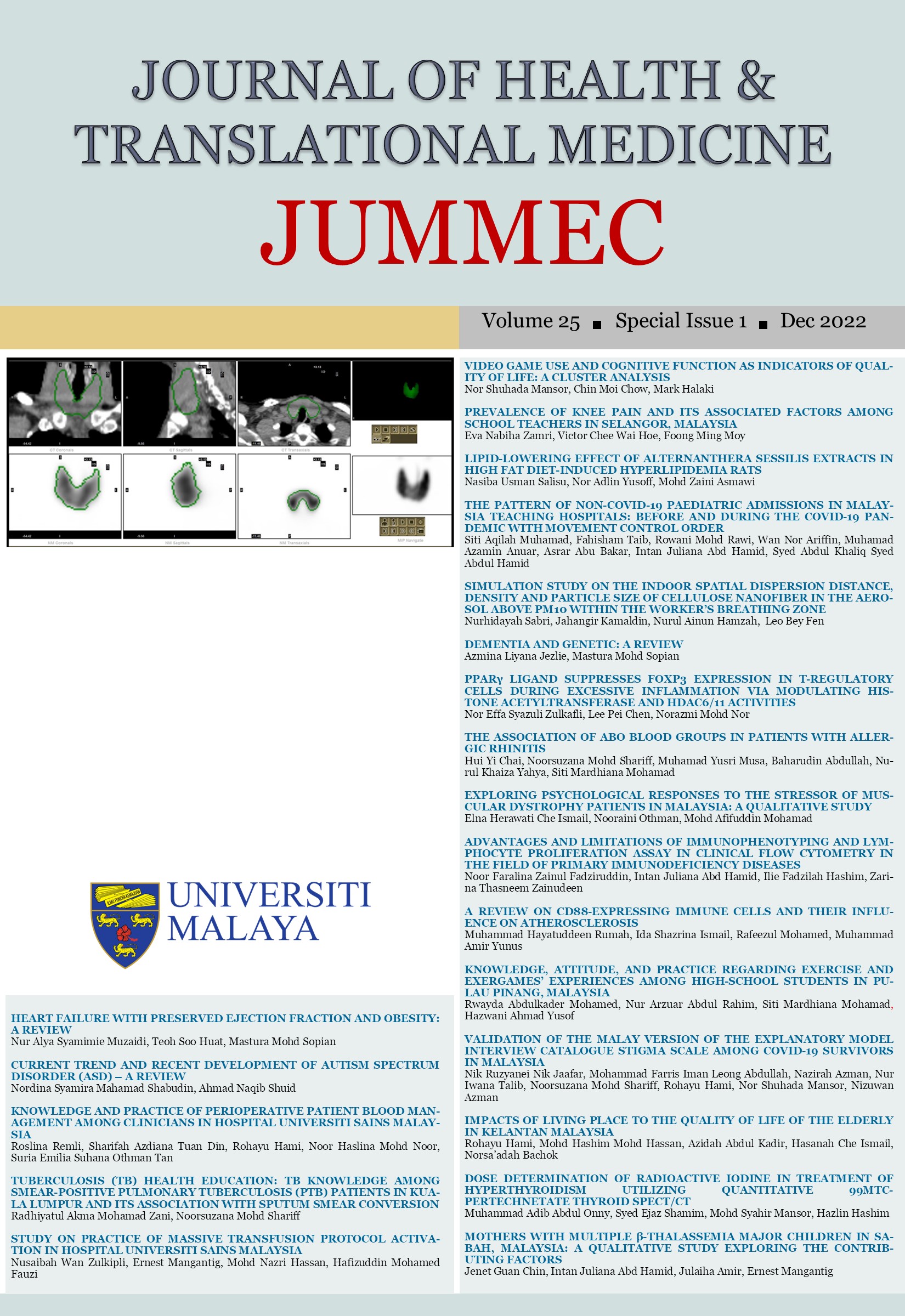THE ASSOCIATION OF ABO BLOOD GROUPS IN PATIENTS WITH ALLERGIC RHINITIS
Received 2022-07-15; Accepted 2022-11-11; Published 2022-12-31
DOI:
https://doi.org/10.22452/jummec.sp2022no1.8Abstract
ABO blood groups have been associated to increased susceptibility in allergic diseases, including asthma and atopic dermatitis. Although few studies demonstrated the association of ABO blood groups with allergic rhinitis, the evidences are still generally scarce and involved certain population. Therefore, this study aimed to investigate the association of ABO blood groups and allergic rhinitis in the Malaysian population. Further analysis was conducted to investigate the association between ABO blood groups and specific allergens, such as house dust mites, in patients with allergic rhinitis. A total of 163 patients with allergic rhinitis and 163 controls were recruited from AMDI, USM, Penang and HUSM, Kelantan. Blood samples were collected from both groups, and ABO phenotypes were identified using the tube method. The Pearson Chi-square test was employed to determine the association. Statistical significance was set for an alpha error of 5% (p-value < 0.05). O blood was identified as the most common blood group. However, no significant associations of ABO blood groups were observed in the allergic rhinitis patients. The result was also not significant with the O blood group being the highest prevalence and the AB blood group being the least prevalence to house dust mites allergy. This study provides beneficial information for future studies on the predictive role of blood groups in clinical practices. In our study, most of the participants recruited were Malays which might cause genetic bias. Therefore, employing a multi-centered and multiracial approach with larger sample size is recommended for future research.
Downloads
Downloads
Published
Issue
Section
License
All authors agree that the article, if editorially accepted for publication, shall be licensed under the Creative Commons Attribution License 4.0 to allow others to freely access, copy and use research provided the author is correctly attributed, unless otherwise stated. All articles are available online without charge or other barriers to access. However, anyone wishing to reproduce large quantities of an article (250+) should inform the publisher. Any opinion expressed in the articles are those of the authors and do not reflect that of the University of Malaya, 50603 Kuala Lumpur, Malaysia.


